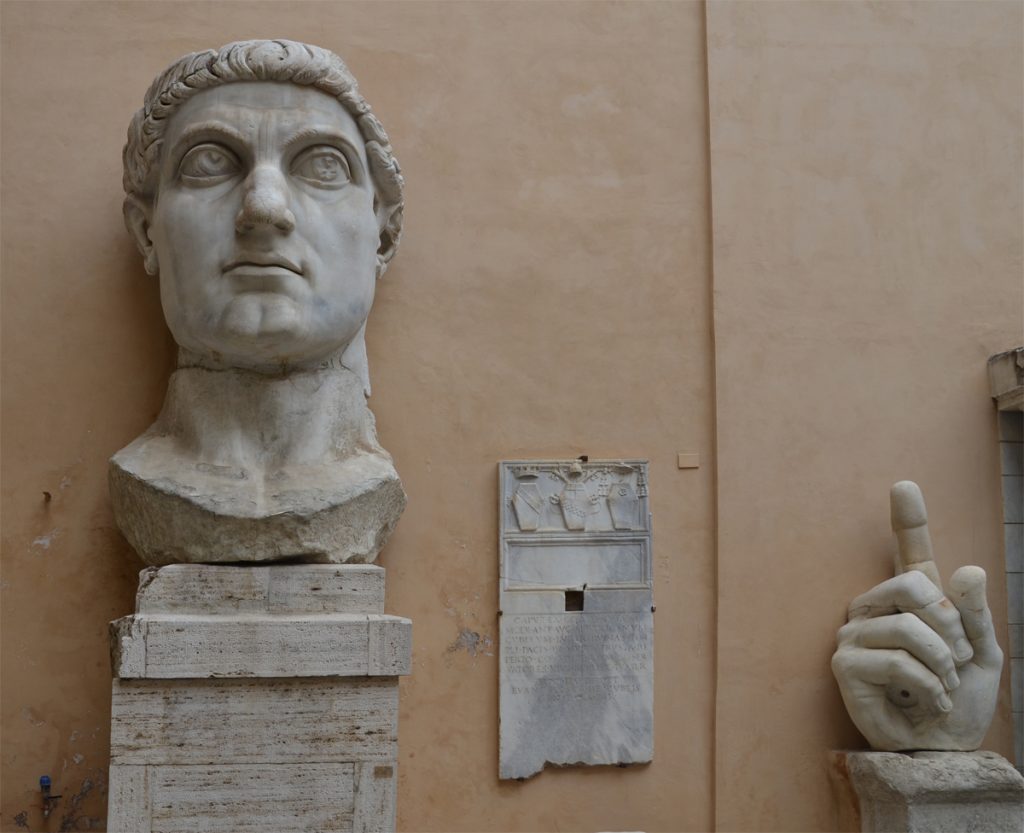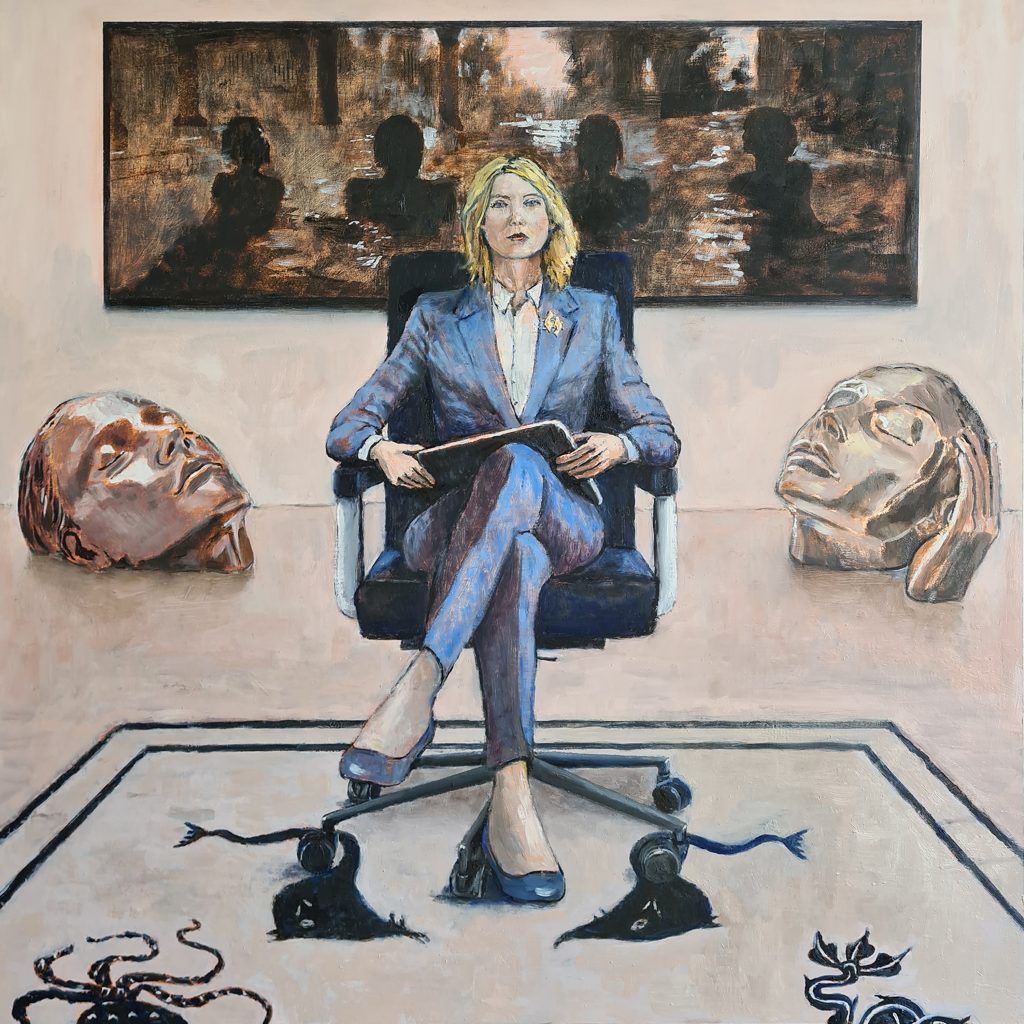Introduction
The Quiet Zone draws upon Roman and Greek mythology, archaeology, classicism, art history, and trends in contemporary painting.

QR Codes
The painting contains QR codes to help reveal its meaning.
Other artists have painted QR codes. Some leave the code as a standalone work while others embed the code into their work. My codes were created using Adobe Express. This is a free service and each code can be scanned any number of times. The codes are static and do not allow editing, but they serve my purpose, which is to point to specific web pages.
A property of QR codes is the white space margin around the code, which must occupy at least 15% of the overall space. It is known as the quiet zone.
I intended to use these examples of recent art and contrast them with works influenced by ancient art. This combination initiated the start of my painting. The space would be a gallery. It would have QR paintings with unique codes, and the floor would link to those codes in some way. How that would be realised was unknown when I began work. However, after many changes across a period of 8 months, the mosaic design was finally incorporated into a rug.
Roman Art
I thought the gallery needed sculpture, and so I created two large heads of women asking for quiet. These were influenced by fragments of sculpture I had seen in Rome’s Capitoline Museum.


The Southwark Mosaic
The Roman theme was extended when I read about an archeological dig in South London, when, in 2023, a Roman mosaic floor was discovered in Southwark. Archeologists believe it formed part of a mausoleum.
I have previously taken inspiration from Roman art. For example, the Neptune paintings are based on mosaics I observed in Herculaneum.
There was an obvious connection between the tessellation of an ancient mosaic and that of a two-dimensional QR matrix.
It was time for me to brush up on Roman/Greek mythology, particularly that surrounding death.
Greek Mythology
In Greek mythology, the god Pluto ruled the underworld. He held the keys to its gates thus preventing escape, while a three-headed hound, Cerberus, kept watch for would-be escapees.
Pluto and his queen, Persephone, were adopted by artists and writers throughout the Classical Greek period. The myths were changed, as were names.
One origin story had Pluto, or Hades, abducting Persephone and taking her for his queen. Consequently, he was sometimes depicted as a violent god until priests cleaned his reputation. Plouton (note the new name) was then presented as a doting husband, a provider of crops, and a benefactor of the Earth’s riches. Meanwhile, Persephone, no longer a victim of rape, was permitted to return to the earth’s surface each Spring, hence her personification as a harbinger of grain crops.
The myths found fertile ground in the imagination of artists throughout the ages. The Romans adopted Greek Classicism as the template for art and architecture and it has been passed down to us via finds like those in Southwark.
Persephone as an Archetype
It was at this point that I realised the need for a manifestation of Persephone.
I drew several incarnations until settling on one that I placed front and centre. She exudes power, and like a writer who creates characters based on people they know, I have painted an archetype that could not exist without personal experience.
Her exact role can be interpreted in several ways. Maybe she is a collector of art or the owner of a gallery. She could be a museum director or the CEO of a financial institution surrounded by a collection typically found in the City of London. Viewers can decide for themselves.
Pose, Colour, and Symbols
I have placed the viewer in a position looking up at this ‘mistress of the house‘. A one-point perspective reinforces this sense of domination by fixing the vanishing point at the junction of her jacket’s lapels. Her suit and shoes are red, the dominant colour; like blood, a matter of life and death.

She wears a gold necklace in the form of strands of wheat, a sign that she has the power to bestow a harvest on a chosen few.
A Key and a Code
Keys play their part in this painting. The design of the rug contains a key meander.
As mentioned above, each QR code points to a unique URL. The left-hand QR code points to a Wikipedia page about Persephone, while the other points to this essay.
Conclusion
The Quiet Zone is a very eclectic painting. It pulls together strands from the past and the present. It fuses art, history, and technology. More specifically, it is a depiction of someone with the power to affect the life of artists.
Before completing this painting, I thought about creating other pictures in a similar vein. The painting shown below, which casts Salacia in a modern guise, is the latest example.

